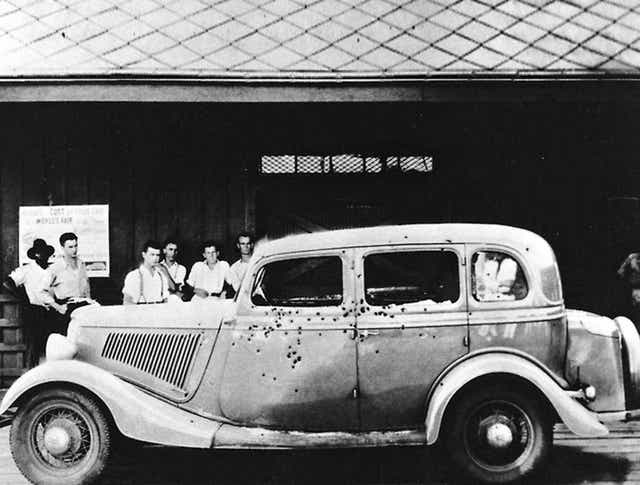
COMPARING APPLES TO ORANGES
Invariably, when you find yourself in a discussion with pro-gun people someone will propose this argument:
“People die from cars all of the time, yet nobody is banning cars.”
Perhaps on the surface that seems like a legitimate argument. But it isn’t, for three very significant reasons. Here’s why.
1) CARS AND GUNS ARE BUILT FOR COMPLETELY DIFFERENT PURPOSES.
Cars (including trucks and other motor vehicles) are built for the purpose of transporting people and things from one place to another.
Guns are built for the singular purpose of bringing physical harm (eg: killing, wounding, and maiming) to living creatures.
2) CAR DEATHS ARE USUALLY ACCIDENTAL. GUN DEATHS ARE MOSTLY BY INTENTION.
When people are injured or die as the result of interacting with a vehicle, most of the time it is because of an accident: they are either hit by a vehicle, or injured while riding in a vehicle because certain safety features were not properly used. An accident is defined as something that happens without intention.
When people are injured or killed from an interaction with a firearm, it is most often because the shooter intends to kill or injure the other person. There are instances where people die by accident from a gun, as in an accidental misfire, or a child getting hold of a gun in the house, but these instances are most often because the person who is injured or killed was not practicing gun safety at home.
Both cars and guns can be used for the purpose of committing suicide, but in that respect, it is most often the gun that is used, not the car.
3) THE HISTORIES OF CARS AND GUNS SHOW COMPLETELY DIFFERENT PATHS.
Since the 1920’s, automobile designers and manufacturers have worked to make their products safer. The earliest cars were started by turning cranks inserted into the bottom of the grille which could kick back and break the user’s hand and arm bones or shatter their skulls. So the automobile industry invented the electric foot starter, and later the key ignition (and now, the dash push button) to make starting a car as safe as possible. Then the auto manufacturers installed windows made with safety glass to prevent people from receiving serious injury from shattering glass. Later, for improved vision, auto makers replaced flat two-piece windshields with curved one-piece windshields and added windshield wipers and visors. They added bumpers to vehicles that would help vehicles absorb shocks. As car speeds increased, the industry replaced the stamped steel dashboards with padded dashboards to prevent people from breaking noses and suffering other injuries in mild collisions. Next came seat belts, and collapsible steering columns. And then airbags. And now, vehicles include such safety features as automatic braking, rear-vision cameras, and lane control to prevent collisions and other types of driving accidents. Plus, electric vehicles that limit the pollution output are becoming more popular. All of these things have been done to make the motor vehicle safer for both the operator and the “other guy.”
Guns have gone through a completely different evolution. Initially they worked like hand-held cannons. Gunpowder, packing, and a musket ball had to be inserted into the barrel of every gun and tamped down, and an ignition source (most often a spark from a piece of flint striking a flash pan) had to be employed in order to ignite the gunpowder and fire the ball. This meant that only a couple of rounds of ammunition could be fired per minute by an experienced shooter. Then in the 1860’s came the invention of the bullet, a metal capsule filled with gunpowder, that could be fired by being struck in the end by a hammer with a firing pin. Along with that came the revolver, which could fire up to 6 bullets in succession, thereby reducing the amount of time needed between shots. Also developed were breech loading rifles and double barrel shotguns, the latter of which could hold and fire two shells filled with buckshot (for wounding with a spray of pellets). The next advancement in firearms was the repeater, which allowed multiple rounds of bullets to be fired in rapid succession, followed by the self loader (aka Gatling Gun, which could fire up to 3,000 rounds per minute), and with the addition of an electric motor, the machine gun and the submachine gun [Note: these fully automatic repeating guns were outlawed for civilian use by the Federal Government in the 1930’s because they were the guns of choice used by gangsters during Prohibition years, and, inadvertently, many innocent bystanders were being killed]. By the 2nd World War, rifles that used long belts of ammunition called bandoliers had been developed. And from there, multiple round magazines came into being, to feed high powered firearms that would fire repeatedly with every pull of the trigger. In other words, the evolution of firearms has been solely to make them more efficient killing machines. Throughout their entire evolution they have had no other purpose than to injure or kill.
THE FALLACIOUS ARGUMENT
As you can see, comparing cars to guns is a completely fallacious argument. The automobile was developed for transportation and has been continually made safer in order to minimize deaths associated with its use, while the gun has been honed into a rapid fire killing machine which can massacre people in a compressed amount of time. Therefore, when someone tries using the argument that cars kill people too, you can “fire back” with the facts that show how comparing cars to guns is not a valid comparison.
IN CASE YOU NEED MORE AMMUNITION…
The CDC reports that gun deaths have edged out car deaths and cancer as the leading cause of death for children in the US.